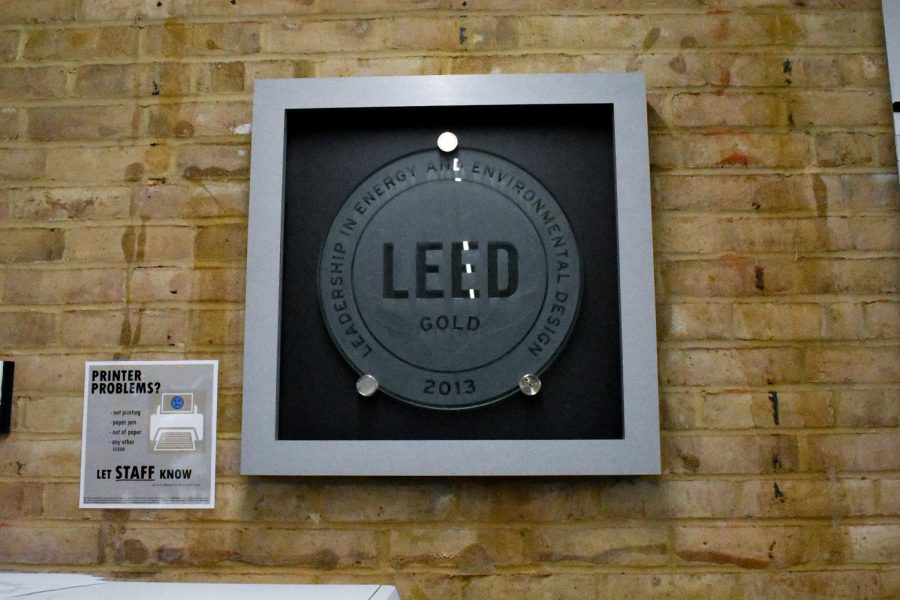New building to uphold eco-friendly elements
“We want to get better than what [gold] requires,” Taylor said. The Truxal Library is one of two AACC gold status buildings in Leadership in Energy and Environmental Design, which is a goal for the Health and Life Sciences Building.
November 1, 2018
Construction of the new Health and Life Sciences Building next summer will focus on environmentally friendly building practices.
According to the college’s Director of Facilities Planning and Construction Jim Taylor, the state will require the building to be silver certified under LEED, or the Leadership in Energy and Environmental Design.
To achieve this, a building must earn between 50 and 59 LEED points out of 100. The project team’s performance rating is based on the amount of energy and water the builders conserve during construction, waste efficiency from transportation and a rating of human experience on the property.
Vice President for Learning Resources Management Melissa Beardmore said she hopes to reach gold status, which LEED grants to building teams that earn between 60 and 79 points.
According to Beardmore, the vision for the new building includes efficiency, fiscal responsibility and sustainability.
Sustainability features will include dry swales—dams used to filter rainwater—as well as rain gardens, flexible roofing to catch excess rain water and meadows to house outdoor pollinators like honey bees. The new building will also feature outdoor classrooms.
“I think it’s great,” Susan Lamont, an environmental science professor and adviser of the college’s Biology and Environmental Club, said. “The outdoor environment is just as important as the indoor classroom, so having these resources on campus will make it much easier for me to teach students about native species and the ecosystem services they provide.”
“I love being part of a school that gives back to the planet, and [I] am impressed by AACC’s efforts to design a cleaner, greener school,” Biology and Environmental Club President Marjorie Rose Butler said.
“Our pollinators are in dire need of more pollinator-friendly areas, especially with the decline of many butterfly and bee species.”
Butler, a second-year horticulture student, added: “One thing I would also like to see in the new building and around campus is more extensive efforts for recycling, such as a recycling bin in every classroom. Hopefully, with the help of both students and faculty, this can be accomplished.”
Taylor said the building is five points away from reaching a gold certification, but the construction team is aiming to earn between eight and 10 more points, as LEED may reject some after analyzing the design.
Taylor said that achieving gold is more difficult than it was when the Library and Ludlum buildings earned it in 2013 and 2014, under an earlier version of LEED.
Under the new version, Taylor said, earning gold is “much more difficult,” because the state now requires some efficiency features that were once worth LEED points.
“What was once gold is now silver,” he said.
Taylor said the main focuses of the new building are lighting, storm water management, water conservation and energy efficiency.
As it strives for gold, the college’s construction team will focus on habitat protection, using materials and colors that reflect heat, and installing low-flow toilets and faucets and quieter, more efficient HVAC equipment.
According to Taylor, the team plans to reuse bricks, concrete and metal from the demolition of the pool and old Schwartz Building in the new building, as a way to earn points.












